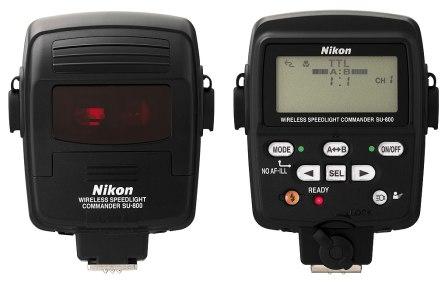SU-800 is a Nikon speedlight commander unit to control other Nikon wireless remote units. It is a very powerful device, easy to use and supports up to 4 Channels and 3 Groups. There is a little switch inside the battery chamber that allows you to switch between the close-up mode and the commander mode. Close-up mode is used for controlling the SB-R200's units and the commander mode is use to control one or more of the Nikon SB-600, SB-800 or SB-900 units wirelessly. Previously, we discussed about how to configure the SB-600, SB-800 and SB-900 units as wireless remote units. In this blog, we will briefly discuss on how to set the SU-800 to control these remote wireless units.
SU-800 Unit
When you turn the SU-800 unit on, it will give you the information about the available Channel groups, their settings (TTL mode and the exposure for example) and the Channel number associated with that group. When you change any of the settings, those settings will be applied to the remote units which are under the same group and the channel as this master unit is. You can use the SEL button to change the values for the Group and the Channel number. Left and right arrow of the SEL button can be used to increase or decrease the exposure compensation value (EV) or the Channel number depending up on which settings you are in. The MODE button will allow you to program the mode of the remote flash unit. Flash can be programmed in TTL (Through The Lens) mode, AA (Auto Aperture) mode, M (Manual) mode and - - (don't trigger the flash) mode. If you want to reset all the setting at once, press the MODE and the ON/OFF together for a while and it will reset the unit to factory default settings.
The Nikon SU-800 unit can only be used as a master unit unlike other speedlight units, SB-800 or SB-900 for example. Nikon SB-800 and the SB-900 can act as a both master flash unit and the remote flash unit which I already discussed in my previous blogs. The SU-800 can control the multiple flash units in four different channels and three different groups and the combination of the SU-800 and the SB-R200 units are popular for a closeup photography or also called macro photography.






